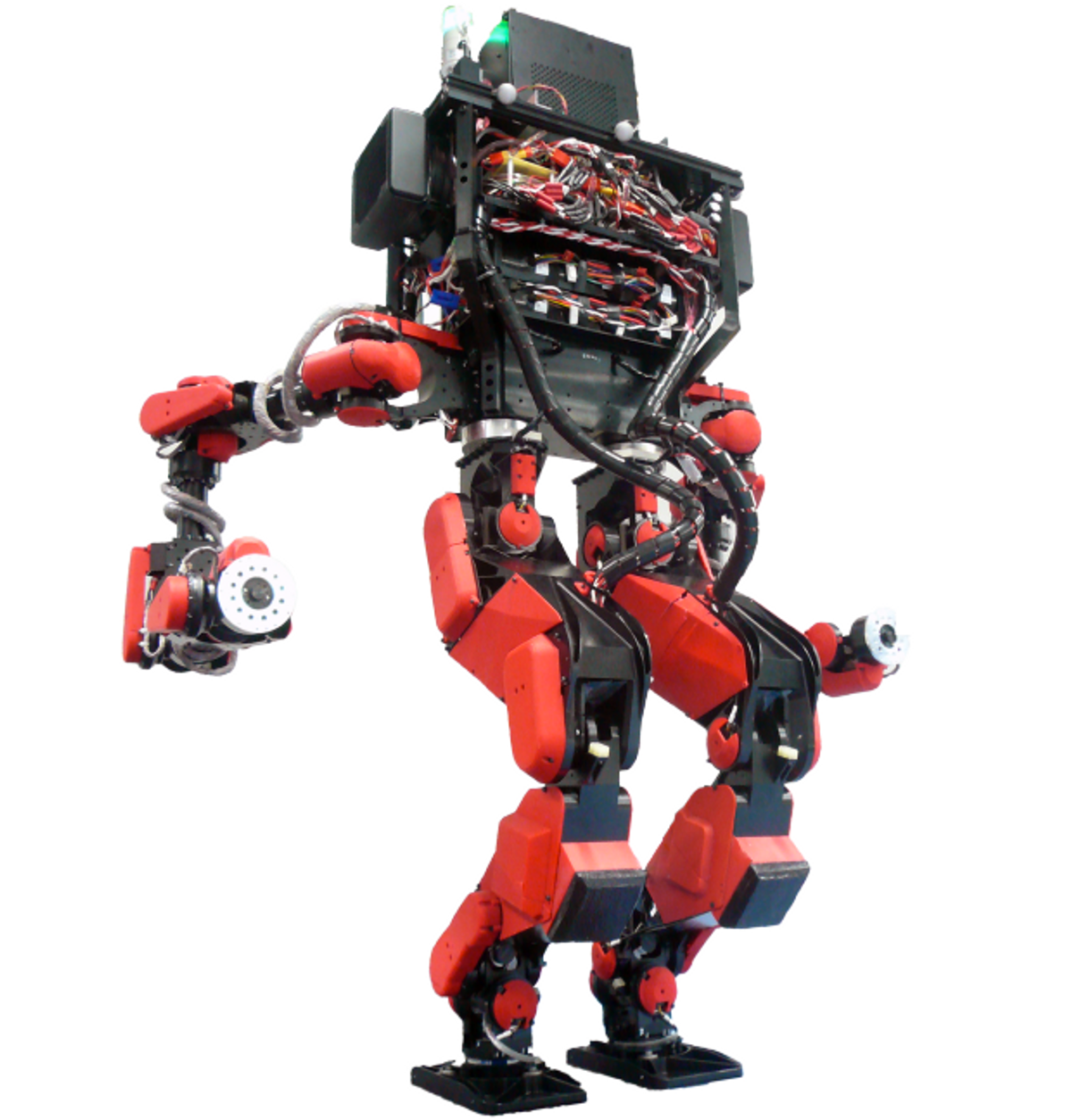Despite the popular notion, propagated by Hollywood and the media, that humanity should fear its extermination at the hands of evil humanoid robots with superhuman strength, the reality is that the electric motors used to power most robots aren't very powerful at all. Famous examples like Honda's ASIMO are only capable of lifting a few kilograms, and most other adult-size robots could be described as having one-tenth the strength of the average person. So much for Terminator and the rise of the machines!
But now a Japanese startup, SCHAFT Inc., has announced a breakthrough in motor technology that may bypass the limitations of existing systems. The company, a spin-off of the University of Tokyo's Jouhou System Kougaku (JSK) Laboratory, has developed—and patented—a new kind of actuator that may make robotic muscles much stronger. Gulp.
We got our first glimpse of this technology almost one year ago, when JSK Lab revealed the Urata Leg (named after Junichi Urata, who earned his PhD working on it). It was a modified version of the HRP3L, a biped robot from Kawada Industries, a company with a longstanding relationship with JSK Lab (the H series robots, developed at JSK, immediately preceded Kawada's HRP series).
Not long after, the JSK researchers decided to spin off SCHAFT to market the technology. At the heart of their system is a high-voltage and high-current liquid-cooled motor driver that gets its power from a capacitor. The capacitor can supply lots of current very fast and reliably, something that batteries are not good at. This in turn allows the electric motor to deliver high speed and high torque to the arm, something that is hard to do with conventional motors. [The motor, the driver, and the arm are pictured above, from left to right.]
The company has now completed a prototype robot you see at the beginning of this story. It may not be as sleek as its HRP cousins, but it's impressive in a mechanical way. The robot is already walking and practicing for the upcoming DARPA Robotics Challenge. There, it and other robots will stand-in for first responders in a mock hazardous environment. The video below is a sneak peek we obtained last year:
The DARPA challenge will be a great opportunity for SCHAFT to show off its innovative motors. A good performance at the competition would compel the next generation of humanoid robots, in Japan and elsewhere, to adopt the technology. The company says it will market the robot's arms, which are small, highly articulated, and powerful, as a stand-alone part for use in mobile robots and manipulation research.
With its storied history and connection to JSK Lab, SCHAFT may be run by a young group of engineers but it benefits from more than 30 years of research and development in humanoid robots. Besides marketing their proprietary technology, the company, which is currently looking for investors, plans to offer consulting services on the development and operation of humanoid robots. Let's just hope Cyberdyne Systems doesn't hire them.
[ SHAFT Inc. ]




